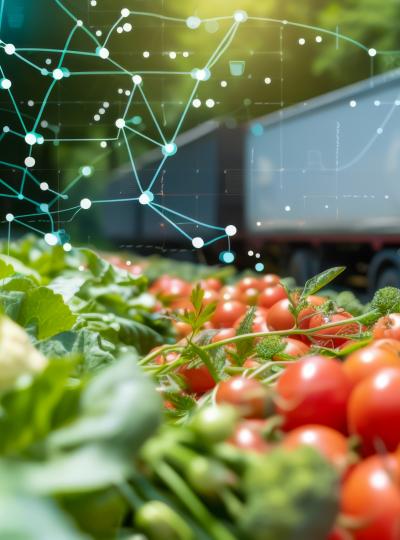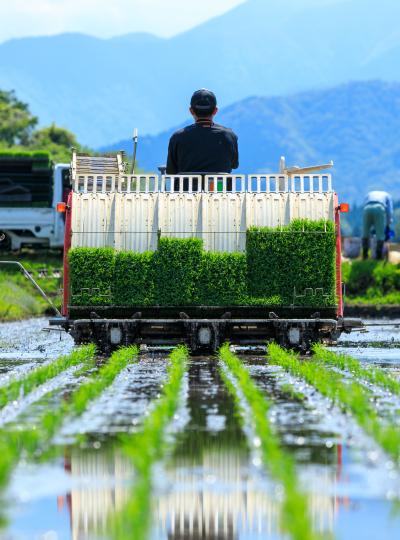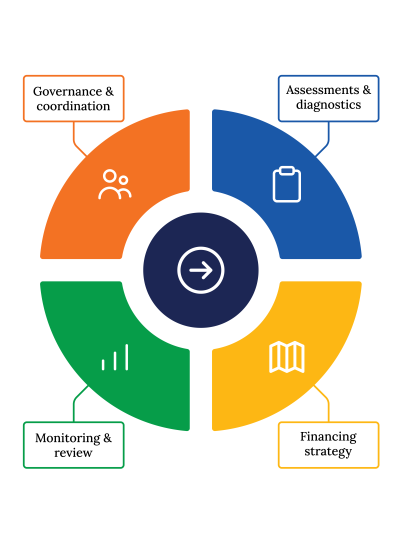Value-Added Agriculture






Business Model Description
Establish or expand agro-processing facilities to transform raw agricultural products into higher-value goods for domestic and export markets. This includes investing in modern processing technologies, quality control systems, and marketing strategies. Jamaica's potential for controlled environment agriculture, such as greenhouses, can enhance quality and consistency of produce.
Expected Impact
Increase farmers' income by enhancing product quality and marketability. Farmers can capture greater value and create jobs
How is this information gathered?
Investment opportunities with potential to contribute to sustainable development are based on country-level SDG Investor Maps.
Disclaimer
UNDP, the Private Finance for the SDGs, and their affiliates (collectively “UNDP”) do not seek or solicit investment for programmes, projects, or opportunities described on this site (collectively “Programmes”) or any other Programmes, and nothing on this page should constitute a solicitation for investment. The actors listed on this site are not partners of UNDP, and their inclusion should not be construed as an endorsement or recommendation by UNDP for any relationship or investment.
The descriptions on this page are provided for informational purposes only. Only companies and enterprises that appear under the case study tab have been validated and vetted through UNDP programmes such as the Growth Stage Impact Ventures (GSIV), Business Call to Action (BCtA), or through other UN agencies. Even then, under no circumstances should their appearance on this website be construed as an endorsement for any relationship or investment. UNDP assumes no liability for investment losses directly or indirectly resulting from recommendations made, implied, or inferred by its research. Likewise, UNDP assumes no claim to investment gains directly or indirectly resulting from trading profits, investment management, or advisory fees obtained by following investment recommendations made, implied, or inferred by its research.
Investment involves risk, and all investments should be made with the supervision of a professional investment manager or advisor. The materials on the website are not an offer to sell or a solicitation of an offer to buy any investment, security, or commodity, nor shall any security be offered or sold to any person, in any jurisdiction in which such offer would be unlawful under the securities laws of such jurisdiction.
Country & Regions
Sector Classification
Food and Beverage
The sector is pivotal not only for economic growth but also for ensuring food security and enhancing the livelihoods of a significant portion of the population. As the country strives to meet the demands of a growing population and shifting global market dynamics, strategic investments in agriculture are essential
The sector aligns with Jamaica’s Vision 2030 goals, which prioritize agriculture and agro-processing to boost exports, reduce imports, and ensure food security. Policies such as the National Export Strategy and the Agro-Investment Corporation’s initiatives support value-added agriculture by targeting key products like coffee, cocoa, ginger, and yam for processing and export.
Jamaica’s food and beverage sector faces a strong demand for innovation to meet export market requirements and local consumption needs. The sector is critical for economic growth, contributing significantly to GDP, employment, and foreign exchange earnings.
Food and Agriculture
Jamaica’s agricultural sector requires diversification and value addition to address challenges such as high food imports, low export competitiveness, and limited processing capacity. Value-added agriculture can transform raw produce into higher-value products like sauces, spices, and beverages, reducing the food import bill and boosting export revenues
Value-added agriculture aligns with key policies like Vision 2030, which emphasizes agro-processing for economic growth, food security, and job creation. The National Export Strategy and JAMPRO’s initiatives prioritize investment in high-demand products such as ginger, yam, coffee, and condiments for domestic and international markets
Processed Foods
Pipeline Opportunity
Value-Added Agriculture
Establish or expand agro-processing facilities to transform raw agricultural products into higher-value goods for domestic and export markets. This includes investing in modern processing technologies, quality control systems, and marketing strategies. Jamaica's potential for controlled environment agriculture, such as greenhouses, can enhance quality and consistency of produce.
Business Case
Market Size and Environment
USD 100 million - USD 1 billion
15% - 20%
Land availability for agricultural production.
Export Growth: Jamaican agricultural exports totaled USD 268 million in 2021, driven by high demand for products like yams, ginger, and coffee in ethnic and diaspora markets. Expanding agro-processing can further boost export revenues
Government Initiatives Projects like Agro-Parks aim to convert underutilized land into agricultural hubs, supporting value-added production through infrastructure for irrigation, packaging, and cold storage
Tourism Demand: Over 4 million annual tourists fuel local demand for high-quality Jamaican food and beverages, creating opportunities to integrate agro-processing with tourism supply chains
Indicative Return
> 25%
Export Profitability: Agro-processed exports like coffee, spices, and sauces generate high margins, with processed goods
Government Incentives Tax breaks, subsidies, and infrastructure investments in Agro-Parks reduce operational costs, increasing profitability for investors in value-added agriculture projects
Investment Timeframe
Short Term (0–5 years)
Jamaica’s proximity to key export markets like the U.S. and Canada and established logistics networks streamline operations for fast return on investment timeframe
Crops like ginger and peppers have short growth cycles, allowing farmers to supply processors quickly, ensuring early returns on investment
Ticket Size
USD 500,000 - USD 1 million
Market Risks & Scale Obstacles
Business - Supply Chain Constraints
Capital - CapEx Intensive
Market - Highly Regulated
Impact Case
Sustainable Development Need
Economic Diversification: Value-added agriculture reduces Jamaica's reliance on raw exports and tourism, creating a more resilient economy. For example, agro-processing of crops like ginger and yam boosts export earnings and local job creation
Environmental Sustainability: Practices like crop diversification, organic farming, and intercropping improve soil health and biodiversity while reducing the environmental impact of farming. These methods align with global sustainability trends and enhance climate resilience.
Reduction of Food Imports: By replacing imported goods with locally processed alternatives, Jamaica can reduce its food import bill, promoting food sovereignty and economic self-sufficiency.
Gender & Marginalisation
Gender norms and discriminatory practices perpetuate inequalities, such as prioritizing men in land leasing and training opportunities. These biases hinder women’s participation in large-scale agricultural production and decision-making.
Expected Development Outcome
Investments in agro-processing can create 10,000 jobs in rural areas, improving incomes and reducing poverty
Expanding value-added exports (e.g., sauces, spices) can increase export earnings by 25% within five years
Gender & Marginalisation
Value-added agriculture creates jobs in agro-processing and marketing, increasing women’s participation in higher-value segments of the supply chain
Primary SDGs addressed

2.1.1 Prevalence of undernourishment
FAO et al. (2015) report 14.7 million undernourished people in developed regions, which corresponds to an average prevalence of 1.17% in the developed regions. Prevalence of undernourishment in Jamaica as of 2019 is 7.7%
By 2030, double the agricultural productivity and incomes of small-scale food producers, in particular women, indigenous peoples, family farmers, pastoralists and fishers, including through secure and equal access to land, other productive resources and inputs, knowledge, financial services, markets and opportunities for value addition and non-farm employment. (https://caribbean.un.org/en/sdgs/2

1.1.1 Proportion of the population living below the international poverty line by sex, age, employment status and geographic location (urban/rural)
Jamaica’s poverty rate declined to 11% in 2019 from 19% in 2017, but rural poverty remains higher at 6.7% in 2019. (https://www.pioj.gov.jm/wp-content/uploads/2022/10/VNR_Goal_2.pdf)
Target by 2030: Reduce poverty prevalence below 10%, as outlined in Vision 2030 Jamaica and the National Poverty Reduction Programme (NPRP)

8.1.1 Annual growth rate of real GDP per capita
Compared to October 2021, there were 10,600 (4.6 %) more persons working in the industry, comprising 5,000 males and 5,600 females. The number of persons employed in ‘Agriculture, Forestry and Fishing’ was 183,000, most of whom were males (136,600 or 74.6%) (https://jis.gov.jm/the-labour-force-october-2023/)
8.1-Sustain per capita economic growth in accordance with national circumstances and, in particular, at least 7 per cent gross domestic product growth per annum in the least developed countries. (https://www.vision2030.gov.jm/wp-content/uploads/sites/2/2021/05/Alignment-of-the-Vision-2030-Jamaica-MTF-2018-2021-National-Strategies-to-the-Sustainable-Development-Goals-SDGs-Indicators-and-Targets.pdf)
Secondary SDGs addressed



Directly impacted stakeholders
People
Planet
Public sector
Corporates
Indirectly impacted stakeholders
People
Gender inequality and/or marginalization
Corporates
Public sector
Outcome Risks
Environmental Degradation Risks: While sustainable practices are promoted, unintended outcomes like overexploitation of land or water resources may arise if demand for high-value crops increases excessively. This could lead to soil degradation and reduced biodiversity
Market Saturation Risks: Intended export growth could lead to oversupply in key markets, reducing profitability for Jamaican producers. This unintended consequence may discourage further investment and destabilize local economies
Financial Accessibility Risks: Intended outcomes of improving farmer incomes may be undermined by the inability of small farmers to access financing due to lack of collateral or financial literacy. This could perpetuate inequalities in agricultural growth and limit participation in value-added agriculture
Impact Risks
Evidence Risk:Insufficient high-quality data on the impact of value-added agriculture, such as productivity improvements and income gains, could limit accurate measurement of outcomes. This may hinder scaling efforts or misdirect resources.
Stakeholder Participation Risk: Small farmers may face challenges in accessing financing or participating in value-added agriculture due to lack of collateral or technical knowledge. Misunderstanding their needs could limit the inclusivity and effectiveness of interventions
Drop-Off Risk: Positive impacts, such as increased rural incomes, may not endure if farmers cannot sustain operations due to fluctuating market demand or high input costs, leading to economic instability over time
Impact Classification
What
Investing in value-added agriculture generates positive outcomes by increasing rural incomes, reducing food insecurity, and enhancing climate resilience.
Who
Smallholder farmers, rural women, and youth, who are underserved due to limited access to markets, resources, and financing.
Risk
Climate shocks or market volatility. Additionally, stakeholder participation risks arise if marginalized groups, especially women, are not adequately included in decision-
Contribution
Creation of opportunities that would not have occurred otherwise, such as access to high-value markets for smallholders and empowering women through agro-processing roles.
Impact Thesis
Increase farmers' income by enhancing product quality and marketability. Farmers can capture greater value and create jobs
Enabling Environment
Policy Environment
Vision 2030 Jamaica: Aims to transform agriculture through research-driven, market-oriented approaches, emphasizing high-value production and rural development to ensure food security. (https://www.vision2030.gov.jm/wp-content/uploads/sites/2/2020/12/Microsoft-Word-Vision-2030-Jamaica-Final-Draft-Agriculture-Sector-Plan-%E2%80%A6.pdf)
Agricultural Trade Policy- The policy aims to promote the export of agricultural goods, particularly those with high value-added, and address challenges like quality standards and non-tariff barriers.
CARICOM Common Agricultural Policy: Encourages regional collaboration in agricultural trade and value-added production, benefiting Jamaican producers
Financial Environment
Financial incentives: Currently no fiscal or other incentives that would facilitate investment in marine products limiting a lot of overseas or local entities investing in Jamaican aquaculture
Rural Economic Development Initiative II (REDI II): Targets rural agricultural infrastructure development, including irrigation systems, cold storage facilities, and greenhouse construction
Export-Import Bank of Jamaica (EXIM Bank): Provides low-interest loans to agricultural exporters, including those in agro-processing, to support production, packaging, and market expansion.
Development Bank of Jamaica (DBJ) Financing: Offers loans and grants specifically for agro-processing, totaling $1.2 billion in recent years, to enhance market access and supply chain efficiency.
Regulatory Environment
Processed Food Act: Requires registration of food processing establishments and mandates inspections to ensure compliance with sanitary and cleanly conditions. It also sets standards for packaging, labeling, and fitness for human consumption
Good Agricultural Practices (GAP) and Good Manufacturing Practices (GMP): Mandatory for agro-processors to ensure safe and healthy food products, aligning with international standards like ISO 9001:2015.
Draft Jamaican Standard Specification for Processed Foods (DJS 36: 2021): Specifies food safety requirements for pre-packaged processed food establishments, ensuring compliance with hygiene, packaging, and quality standards.
Marketplace Participants
Private Sector
Grace Kenndy Foods, Wisynco Group Limited, Serge Island Food, Rainforest Seafood, Jamacia Broilers Group, Caribbean Broilers, Agro-Invest Corporation.
Government
The Ministry of Agriculture plays a vital role in policy development and support through entities like the Rural Agricultural Development Authority (RADA) which promotes drone technology adoption among farmers. Bodles Research Station: A government-run research institution conducting research and development in agriculture.
Multilaterals
Food and Agriculture Organization, United Nations Development Programme, European Union, United States Agency for International Development, Interamerican Development Bank, Caribbean Development Bank, World Bank
Public-Private Partnership
Anchor Firm Model PPPs- Links private firms with smallholder farmers through advance agreements for produce while providing inputs like planting materials to stabilize supply chains















